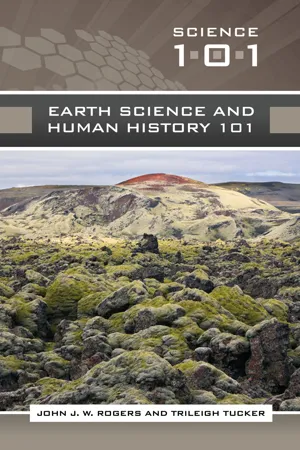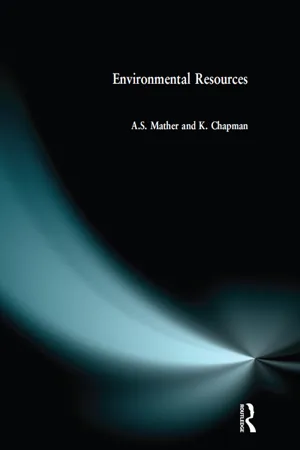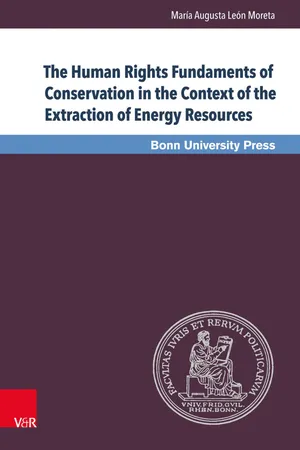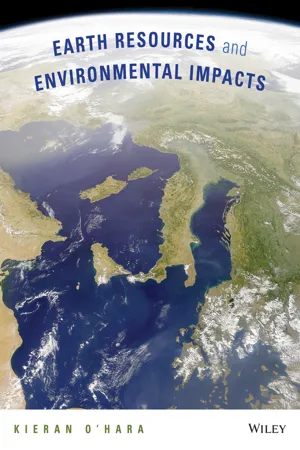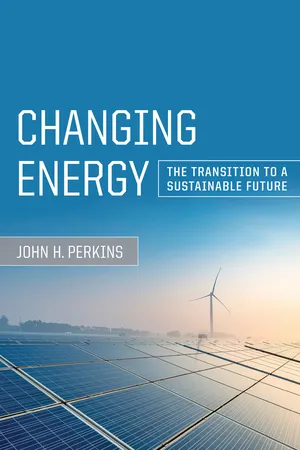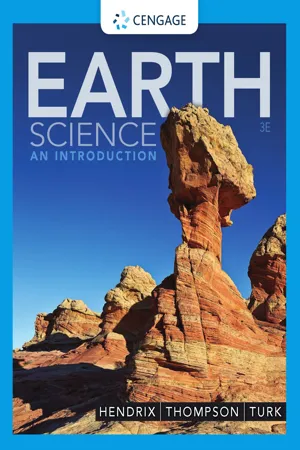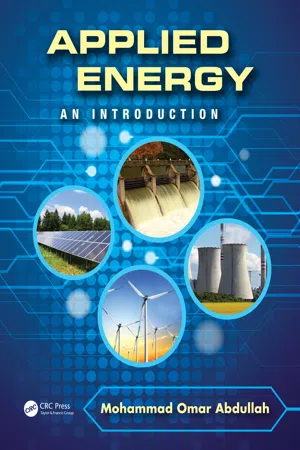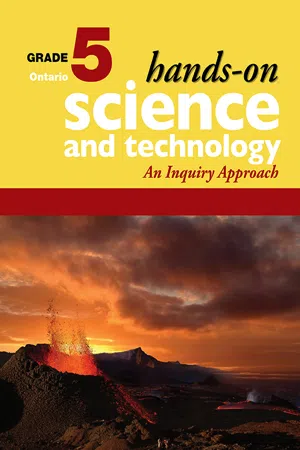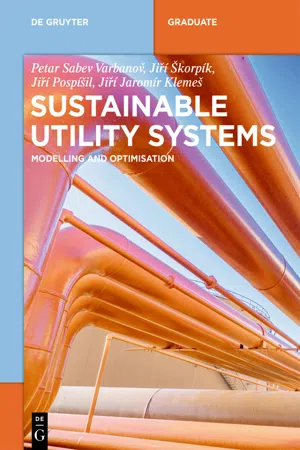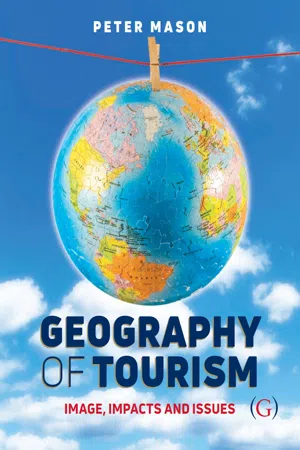Geography
Energy Resources
Energy resources refer to the various natural sources of power that can be harnessed to produce energy. These resources include fossil fuels such as coal, oil, and natural gas, as well as renewable sources like wind, solar, hydroelectric, and geothermal energy. The use and management of energy resources have significant environmental, economic, and geopolitical implications.
Written by Perlego with AI-assistance
Related key terms
1 of 5
11 Key excerpts on "Energy Resources"
- eBook - PDF
- John J.W. Rogers, Trileigh (Patricia) L. Tucker(Authors)
- 2008(Publication Date)
- Greenwood(Publisher)
4 Resources and the Environment Geology and atmospheric dynamics control the distribution of natu- ral resources around the world. Reallocating these resources so that they are shared with those in countries other than where they originate has profoundly shaped world history, including power relationships, na- tional boundaries, and the well-being of billions of people throughout geography and time. We discuss five critical aspects of present and past consumption of resources and the environmental consequences of their use: (1) en- ergy resources; (2) mineral and rock resources; (3) food resources; (4) fresh water resources; and (5) wireless communication and the Internet, which has recently become one of the world’s most powerful resources. Energy Resources have been critical to cultural evolution throughout history because use of stored energy multiplies the productivity of hu- man and animal energy. The activities involved in discovery, extraction, refining, purchase, delivery, and use of these Energy Resources constitute a significant proportion of world economic activity. All energy sources, however, create significant problems. The United States must import most of its oil, and world reserves are being depleted. Burning fossil fuels has serious consequences for global atmospheric processes (see Chapter 1). Nuclear fuels have several downsides, partly because ra- dioactive elements can be used for making the most powerful weapons ever invented, and radioactive isotopes are very hard to get rid of safely once they have been created for any purpose. Fully renewable Energy Resources include hydropower, solar and wind energy, and biofuels, but production of some biofuels reduces the amount of food available for people. Mineral and rock resources have been critical for making tools and other physical goods throughout history and also for serving as symbols - eBook - PDF
- Dhankhar, Rajesh(Authors)
- 2021(Publication Date)
- Daya Publishing House(Publisher)
I Natural Resources Introduction Forest Resources Water Resources Mineral Resources Food Resources Energy Resources Land Resources Role of an Individual in Conservation of Natural Resources INTRODUCTION n broad terms, a resource or natural resource, is an asset available to be used when needed by an organism or group of organisms. In other words, a resource is something useful for humanity, but the concept of utility can change because of technological, economical, and environmental factors. The sum total of all physical, chemical and social factors which compose the surrounding of man is referred to as environment and each element of these surroundings constitute resource on which man draws in order to develop a better life. Any material which can be transformed in a way that it becomes more valuable and useful can be termed as resource. It is possible to obtain valuable items from any resource. This ebook is exclusively for this university only. Cannot be resold/distributed. Ramade (1984) defined a resource as a form of energy or matter which is essential for the functioning of organisms, population and ecosystem. In the case of human beings, a resource, in his words, “is any form of energy or matter essential for fulfilment of physiological, socio-economic and cultural needs, both at the individual level and that of the community”. The functioning of ecosystem or of technological civilisation involves a continuous flow and consumption of energy. In light of this fact, a resource may be defined as one of the various forms of primary source of energy present in nature. The five basic ecological variables are energy, matter, space, time and diversity, sometimes together called natural resource. Classification of Natural Resources Resources may be classified on the basis of the following. 1. Availability (i) Inexhaustible: These resources are unlimited in quantity and quality. With the passage of time quality may be degraded but not the quantity. - eBook - ePub
- A.S. Mather, K. Chapman(Authors)
- 2018(Publication Date)
- Routledge(Publisher)
CHAPTER 7 Energy ResourcesThe importance of Energy Resources in human development is undisputed. H.G. Wells (1914:1) suggests that ‘The history of mankind is the history of the attainment of external power’. Many factors contributed to the differentiation of Homo sapiens from the other primates, but the ability to supplement the physical strength of the human body by the development of tools and by the exploitation of energy sources additional to the food obtained by hunting animals and collecting edible plants was very important. Indeed the search for new and better sources of ‘external power’ has been a persistent theme in the endeavour to improve the quality of human life (see Cottrell, 1955; Cook, 1976, 1977). Despite the huge advances that have been made, concerns about the adequacy and availability of Energy Resources remain while the benefits of these advances appear to be more unevenly distributed among the world’s population than ever before. Wells’s vision of ‘A world set free’ by universal access to unlimited energy seems a distant prospect and, in these circumstances, it is important to appreciate the place of Energy Resources in the modern world.Sources of energy
Humankind recognizes numerous Energy Resources and various classification schemes have been devised to represent this diversity. For example, a distinction may be made between ‘primary’ and ‘secondary’ sources of energy. Much of the energy we use is ‘secondary’ in the sense that it has been ‘processed’ before reaching us; most consumers rarely see crude oil, but are familiar with the products of its refining such as gasoline and paraffin. Another important distinction is that between ‘commercial’ and ‘non-commercial’ sources of energy. Commercial energy is bought and sold; non-commercial energy never enters a market in the accepted economic sense. Firewood which is collected by and used within the same family group is non-commercial; firewood bought from a trader is commercial. The distinction is more than semantic. Most published statistics refer to commercial energy, but the daily energy requirements of the majority of the world’s population are met from non-commercial sources. In these circumstances, published statistics may give a misleading impression of the relative importance of the various energy sources, especially in developing countries. Most statistics used in this chapter will, however, reflect the availability of information and refer to commercial energy unless stated otherwise. - eBook - PDF
- María Augusta León Moreta(Author)
- 2015(Publication Date)
- V&R Unipress(Publisher)
2. Extraction of Energy Sources The first stage in an energy system is the extraction of Energy Resources. This activity can exert significant pressure on these sources and on the environment depending on energy demand, mainly driven by population growth, economic development and patterns of consumption. The exploitation of Energy Resources has been defined as methods of turning energy sources into productive and profitable uses. These methods, however, differ greatly depending on the various types of resources. 250 Natural resources used in the generation of energy range from raw materials (renewable and non-renewable resources and environmental media), flow resources (wind, sun, tidal waves, geothermic) to space. Since the focus of this work is on analysing the link between environment and human rights in the context of the extraction of Energy Resources and its consequences on the environment and population, it is important to understand the factors and methods bearing on the extraction process. Therefore, the analysis below will address the extraction processes of raw materials and the use of environ- mental media for the generation of non-renewable energy (fossil fuels) and renewable energy (hydroelectric power and biomass) as well as to the con- sequences of this activity on the environment and the population. a. Non-renewable Energy Resources : Basic Components for the Generation of Fossil Fuels According to the European Environmental Agency, fossil fuels are ‘one of the most important and strategic natural resources in modern society’ and con- stitute ‘the primary natural resource for satisfying the growing energy needs of industrialized countries.’ 251 Moreover, fossil fuels are now strategic instruments for ensuring economic growth in emerging countries since they support their industrialization process. In fact, the demand for fossil fuels has considerably increased in emerging countries because of the recent experimented in- dustrialization. - eBook - PDF
- Kieran D. O'Hara(Author)
- 2014(Publication Date)
- Wiley(Publisher)
Resource Carbon-Based Noncarbon-Based Renewable Nonrenewable Petroleum X X Natural gas X X Coal X X Biofuels X X Nuclear X X Geothermal X X Solar X X Wind X X Hydroelectric X X Tidal/wave X X Two Classifications of Energy Resources 274 CHAPTER 9 Energy Perspectives Introduction This chapter is somewhat more quantitative than the others. The chapter begins with a brief overview of energy use over time. Different types of energy, including potential, kinetic, chemical, and geothermal, are introduced. The difference between energy and power (energy/time) is pointed out, and the units of energy (joule) and power (watt) are defined. The concept of energy efficiency refers to the conversion of heat to useful work and requires an introduction to heat engines and the first and second laws of thermodynamics. Energy density refers to the amount of energy produced per unit weight (joules per kilogram) of a resource, and power density refers to the amount of energy produced per unit time and area (watts per meter squared). These concepts are useful in evaluating the potential significance of renewable sources such as biofuels, wind, and solar energy as part of our overall energy mix in the future. Energy Use Over Time Prior to Roman times, the main sources of energy were humans, beasts of burden, and water power; wind power no doubt also powered the sails of early mariners. One of the most intense early energy sources was probably the smelting of metals by burning charcoal in a primitive furnace. The increase in energy use per person during the last millennium was relatively slow, however, until the onset of the Industrial Revolution in the eighteenth century when the intensity of energy use increased rapidly (Figure 9.1). By the 1900s Amer- icans were using about twice as much energy as Britons, and by the year 2000, Americans were using twice as much energy as either Europeans or the Japanese. - eBook - PDF
- John H. Perkins(Author)
- 2017(Publication Date)
- University of California Press(Publisher)
Hydropower resources are found where rivers run downhill, which is common but does not occur everywhere. Solar, wind, and hydropower can move only as electrical energy, but that is a relatively cheap mode of transport. The criterion Geographic Distribution assesses the breadth and even-ness of the deposits or supplies of a primary energy source. new criteria Each of the above criteria has long affected energy investments, and each will continue to affect decision making on investments in the Fourth Energy Transition. To these traditional criteria we must add new ones, which follow from the importance of sustainability and demo-cratic choices. Sustainability Sustainability has become a meaningless buzzword. 3 A proponent of a project can seek support for a project or idea by claiming sustainability. Similarly, critics of a project can usefully allege unsustainability, because favoring an unsustainable idea is silly. Adding specifics, however, makes the word useful. The concept of sustainability gained prominence in 1986 with the pub-lication of Our Common Future by the World Commission on Environ-ment and Development, organized by the United Nations and chaired by Gro Harlem Brundtland, former prime minister of Norway. The “Brundt-land Report” offered the essential definition of sustainable development as “development that meets the needs of the present without compromis-ing the ability of future generations to meet their own needs.” 4 For the Commission, sustainability involved an inextricably inter-twined set of concerns: economic growth, elimination of poverty, needed constraints on deployment of technology, reductions of inequal-ity, and the protection and nurturing of ecosystems and resources. The 210 | Chapter 9 aim was to enable future generations to have as good a life as the cur-rent one, which meant that sustainability rests on a time line of forever . - eBook - PDF
Earth Science
An Introduction
- Mark Hendrix, Graham Thompson, Mark Hendrix(Authors)
- 2020(Publication Date)
- Cengage Learning EMEA(Publisher)
Wind farms need wind, solar farms need sun, geothermal plants need geothermal energy, and most biofuels are generated in low-population agricultural regions. These places of energy resource availability usually don’t correspond to a large local population of humans, so it is usually necessary to transmit the electricity generated in each of these cases to the cities and their associated indus- trial zones. ● FIGURE 5.32 A geothermal facility. Mark Godden/Shutterstock.com Copyright 2021 Cengage Learning. All Rights Reserved. May not be copied, scanned, or duplicated, in whole or in part. Due to electronic rights, some third party content may be suppressed from the eBook and/or eChapter(s). Editorial review has deemed that any suppressed content does not materially affect the overall learning experience. Cengage Learning reserves the right to remove additional content at any time if subsequent rights restrictions require it. 112 CHAPTER 5 Geologic Resources the most during this period, but the development of non- hydroelectric renewable Energy Resources is projected to be the fastest-growing segment of the energy economy in percentage terms (●FIGURE 5.33). Much of this growth in non-hydroelectric renewables will offset the continued decline in the production of nuclear energy, but the per- centage of overall energy produced in the United States by non-hydroelectric renewables will remain small compared to that produced by natural gas. In addition, the agency forecasts that strong petroleum production coupled with relatively flat demand will allow the United States to become a net energy exporter within the next decade. Nearly all of the energy exported by the United States is projected to be in the form of petroleum and natu- ral gas, and recovery of hydrocarbons mostly from tight oil reservoirs. The southwestern United States (parts of Texas and New Mexico) is expected to lead the growth in U.S. tight oil supplies between 2017 and 2050 (●FIGURE 5.34). - eBook - PDF
Applied Energy
An Introduction
- Mohammad Omar Abdullah(Author)
- 2012(Publication Date)
- CRC Press(Publisher)
3 Energy Resources, Supply, and Demand In this chapter, we will cover and examine one of the most fundamental aspects of energy application, in relation to the following elements: • Energy Resources; • Energy supply; and • Energy demand. Also, we see the relationships between the elements as well as their importance to our energy applications — as a which influences our worldwide energy application scenarios. 3.1 Introduction to Energy Resources, Supply, and Demand Our Energy Resources, energy supply, and energy demand can be represented by the optimistic, balanced plots shown in Figure 3.1. It is a general trend that, over the years, as total energy demand increases due to our daily energy requirements, total energy supply also increases in order to meet those demands. ∗ Y ear Total energy Energy Resources Energy supply Energy demand Figure 3.1 The interrelation of Energy Resources, energy supply, and energy demand based on optimistic, balanced total energy application (OBTE) scenarios. ∗ It is to be noted that the plot of total Energy Resources is also shown increasing year by year rather than as a fixed plateau; this does not violate the energy conservation laws as outlined in Chapter 1. The total amount of energy in the earth’s system remains unchanged, that is, theoretically, it is the total net available energy reserves that decrease with time (see Section 3.2.2). 79 80 Applied Energy: An Introduction 3.2 Energy Resources 3.2.1 What Is Energy Resources? Energy Resources is a term used to define ways of getting energy for our energy applications. Our world’s Energy Resources basically have close links with the sun, which travels marvelously and consistently around the globe, as a result of which the sun also contributes useful rays and the associated energy on the earth. - eBook - PDF
Hands-On Science and Technology for Ontario, Grade 5
An Inquiry Approach
- Jennifer E. Lawson, Jennifer Lawson(Authors)
- 2020(Publication Date)
- Portage & Main Press(Publisher)
Unit 4 Conservation of Energy and Resources Hands-On Science and Technology • Grade 5 s 262 Portage & Main Press, 2018 · Hands-On Science and Technology for Ontario · Hands-On Science and Technology for Ontario, Grade 5 · ISBN: 978-1-55379-940-5 Introduction In this unit of Hands-On Science and Technology for Ontario, Grade 5, students will develop an understanding of the importance of energy conservation. They will be introduced to forms of energy and learn to distinguish between renewable and non-renewable energy sources. As well, students will design and construct devices that use various forms of energy and investigate how energy is transformed from one form to another within such devices. In addition, students will examine ways in which energy is being lost in the device. Information for Teachers Energy is the property that makes things move. Some of its forms include gravitational, chemical, nuclear, mechanical, muscular, heat, electrical, sound, and radiation. In nature, energy is only borrowed. Living organisms and non-living systems use energy obtained from the environment. This energy is always returned to the environment in some form. Nature is the original recycler. Many Indigenous cultures that perpetuate a deep and respectful relationship with nature, including all plants and animals, have known this for a very long time, understanding how the recycling of resources allows life on Earth to continue. Indigenous peoples have long comprehended the interconnected relationship humans share with animals, and humans’ reliance on animals and plants for sustenance. The Sun is the ultimate source of all energy for our planet. It gives off several different forms of energy, including light, heat, and radiation. All living things rely on the Sun’s energy for survival. Until about 300 years ago, humans had only a few sources of energy. - eBook - PDF
Sustainable Utility Systems
Modelling and Optimisation
- Petar Sabev Varbanov, Jiří Škorpík, Jiří Pospíšil, Jiří Jaromír Klemeš(Authors)
- 2020(Publication Date)
- De Gruyter(Publisher)
4 Primary resources for energy supply The recent edition of Merriam-Webster dictionary defines energy (Merriam-Webster, 2019) in the physics sense as – An entity transferred between parts of a system, which results in the produc-tion of physical change. – Usable heat or electricity. A similar definition can also be found in the recent Cambridge English Dictionary (2019). Thermodynamics elaborates on these definitions (Wu, 2007), referring to en-ergy as the property of the considered system, having components related to – Temperature, giving rise to internal energy; – Velocity, associated with kinetic energy; – Position/potential in a field (e.g. gravitational, magnetic, electrical) – defining several types of potential energy. There are various forms of energy – stored or being transferred between systems. Some examples can be given as follows. – Radiation : This is associated with a flow of photons of various wavelengths. The solar radiation contains energy in photons over a wide range of the wave-lengths (Garner, 2015), arriving to the Earth mainly in the infrared, visible and ultraviolet ranges. The radiation from a fire or a candle is within the visible and infrared ranges. – Chemical energy : Many materials, mainly carbon-based – for example, wood and oil – contain energy stored in a chemical form. These are combustible ma-terials. Other materials, capable of an electrochemical reaction of releasing electrical energy, are used for constructing batteries. – Potential energy : This is energy stored in material within a field; there exists a potential for changing the position within the field. An example can be given with the energy of a water reservoir at a certain height. The water has the po-tential to fall. The fall from the height to a lower point would generate energy. The amount of potential energy is proportional to the amount of water, and the height difference between the reservoir and the location of the final point of the fall. - eBook - PDF
Geography of Tourism
Image, Impacts and Issues
- Peter Mason(Author)
- 2017(Publication Date)
- Goodfellow Publishers(Publisher)
3 Geographical Resources for Tourism Introduction Chapters 1 and 2 made brief reference to a number of potential geographical resources for tourism. Some of these resources are located within the physical environment, such as landscapes, and include coastal area, moorlands and mountains. Others are part of the human environment, including towns and cities and historic monuments – in summary this is usually known as the built environment. These physical resources and human resources are not necessarily located separately but are often found together. For example, a coastal tourism destination has a physical environment which may be made up of a beach, a shoreline, the sea and it could be backed by cliffs. This will be coupled with a human environment of, for example, hotels, restaurants and bars and possibly, a harbour or marina. This chapter considers the physical and human resources for tourism. Key perspectives Approximately 50 years ago, Peters (1969) provided an attempt to classify tourist attractions. His classification, which was made in relation to international tour-ism, had five categories, which are as follows: Cultural: (e.g. sites of archaeological interest, historical buildings and muse-ums, political institutions) Traditions: (e.g. festivals, music, folklore, arts and handicrafts) Scenic: (e.g. National Parks, wildlife, flora and fauna, beach resorts, moun-tain resorts) Entertainment: (e.g. zoos and aquaria night life, cinema, theatre, theme parks) Other attractions: (e.g. climate, health resorts, spas, unique attractions not available elsewhere) (source: Peters,1989) Not long after Peters put forward his fivefold classification, Robinson (1976) argued that very many tourism attractions are, in fact, geographical and suggested that Geography of Tourism 28 there are seven geographical aspects of tourism.
Index pages curate the most relevant extracts from our library of academic textbooks. They’ve been created using an in-house natural language model (NLM), each adding context and meaning to key research topics.
